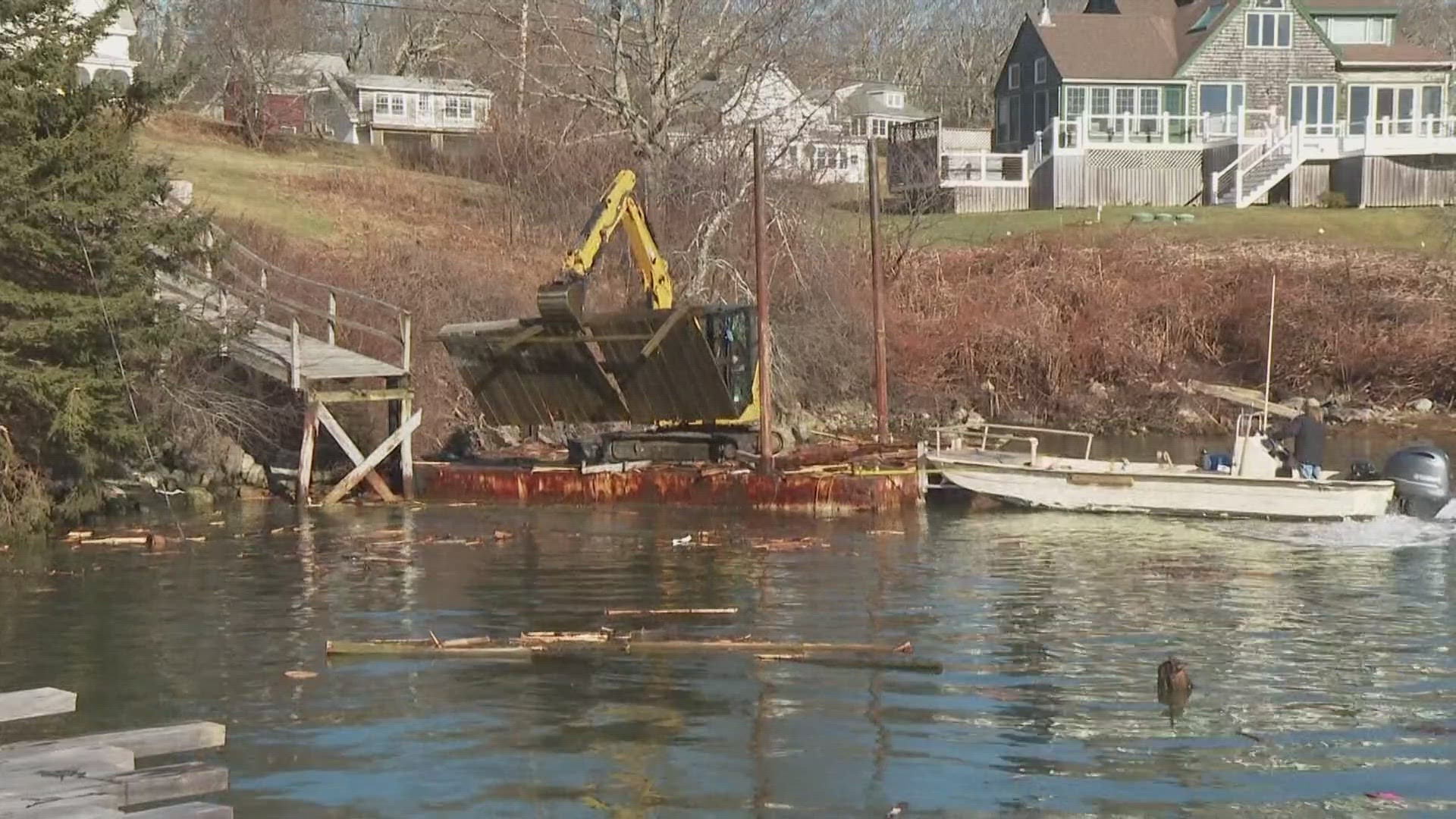BRISTOL, Maine — On the waterfront in New Harbor, one of Maine’s most visited fishing communities, the damage is clear to see. Remnants of wharves that were torn apart by the back-to-back storms of Jan. 10 and 13 are still standing in places, while others have simply vanished, the wreckage pulled out and hauled away.
This small harbor took a beating from the two storms, each of them with higher tides and storm surges than any locals can remember. Even the previous “record storm” in February 1978 did not damage this harbor as severely.
“Heartbreaking,” is how New Harbor Co-op President Mike Prior described the experience of watching helplessly as the big co-op wharf rippled and then buckled under the battering from those storms.
“It’s a mess, we lost like 30 pilings under our dock,” Prior said.
That damage means the whole dock needs to be torn out and replaced — a $320,000 project not covered by insurance.
“We’re going to have to come up with the money somehow,” he said. “Whatever we got to do; borrow it. Because we got to be operational by the first of June.”
That’s when fishing season starts for menhaden, better known as pogeys, an important source of lobster bait for fishermen. The co-op needs the wharf to unload those fish. Lobstermen need it as well to handle their catch and get fuel. They are temporarily able to do that at another dock nearby, which survived the storm.
Some miles up the coast in Port Clyde, their co-op looks relatively normal, but President Gerry Cushman showed where an entire building was pulled away from the dock. That happened even though the building and the dock are both built of heavy granite cribstones, covered with concrete. Cushman said the severe tidal action washed out some of the stones, causing the dock area to tilt and the large building holding their lobster bait to be heaved up, one end as much as a foot higher than the other. That damage, he said, leaves all of it more vulnerable to future storms.
The challenge now, as it is in essentially all of Maine’s fishing harbors, is how to reinforce and rebuild the waterfront infrastructure so it can withstand the next big storm.
“Everyone has to build bigger, taller, higher,” said Cushman. But then said his co-op — which is built in a large U-shape with a mix of wooden docks, stone gravel-filled areas, and concrete — will have to take a different approach.
“Look at this whole facility, I don’t know where you would begin to raise it two feet. You got to think outside the box. 'Okay, this floods, how can we make it [safe] to flood?'"
In New Harbor, Prior said they plan to raise the new co-op dock at least 18 inches and said others in the harbor should do the same.
“That would be my recommendation to anybody considering repairing a dock or replacing it,” said former fisherman Chad Hanna, and Bristol's first selectman.
The Island Institute, which advocates for coastal and island communities, has been raising the issue for several years, encouraging working waterfront dock owners to increase the height of their docks to make them more resilient against sea level rise and more severe storms, all seen as prominent consequences of climate change.
“I think this event and these storms hammered home the impact we are seeing on Maine’s coast from sea level rise and climate change,” said Sam Belknap, of the Island Institute.
“I think this is changing a lot of minds and I'm hoping this will inspire folks who are building back to do it with climate change in mind," he said.
Up to now, there have been climate change skeptics along the waterfront, but Gerry Cushman said the twin storms sent a powerful message.
“For me, it was a major eye-opener,” said Cushman.
“I’ve always been aware things are changing. But I think with climate, they gave us enough warning shots and it's showing us what it can do now. I’m a 1000% [believer]. “
There are major questions to be answered about money. Several estimates already put damage to working waterfronts at $100 million and maybe more. No one knows yet whether federal disaster relief could pay for any of that if dock owners will be left to shoulder the cost on their own, or if the state might provide some of the money to rebuild. Those answers are expected to become more clear in the next few months, even as the fishing industry begins rebuilding, to be ready for the new seasons.

